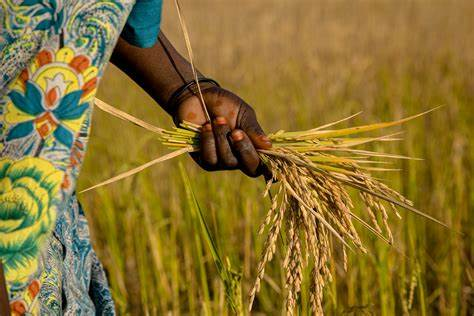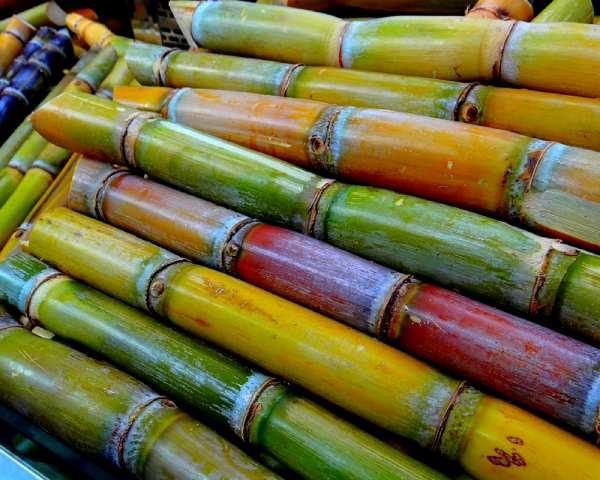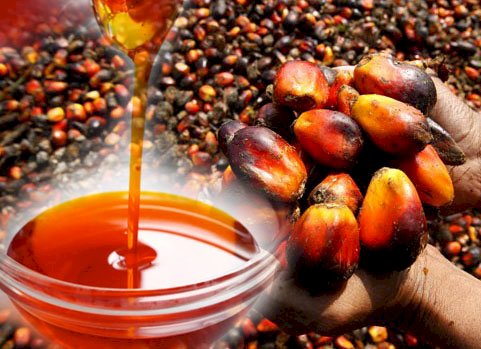SHIPPERS GUIDE
How To Become A Rice Farmer In Nigeria
With the jaw- breaking price of a bag of rice in Nigeria today, you can say that we need more rice producers to create more local competition to crash the price. A standard price of a bag of rice is above N50, 000 not to mention imported ones which can cost up to N80, 000. Rice is an essential grain to most African nations, especially Nigeria. This is because in a week, rice accounts for our daily meal. Most Nigerians are guilty of consuming rice at least 3 times a week.
In West Africa, Nigeria is the continent’s leading consumer of rice as almost 7 million tonnes of rice is consumed per year. It’s a main meal for us. Imagine catering for up to 200 million people for at least five years? That’s an everlasting trip to and fro to the bank; smiling.
Thus, if you are privileged to have a swampy or less acidic land in one of the rural areas, why not farm some grains of ‘gold’. People who reside in Kebbi, Ebonyi, Kaduna, Kano Niger, Benue, Taraba, Borno, Enugu and Cross River are more advantageous because their state climate is most viable for rice production.
It’s been recorded that Nigeria is the largest producer of rice paddy (unprocessed rice still buried in its bran and husk) in Africa. Nigeria exports this rice paddy majorly to Russia, Ghana, Ireland, France, South Africa, Norway, Canada and Hungary.
At the beginning of 2022, the Central Bank Nigeria Governor, Godwin Emefiele reported that Nigeria’s domestic rice production in 2021 rose to 9 million metric tonnes. Rice is always in demand, the market for rice can never be saturated so long as Nigeria exists and even the world. Also, rice is a short term investment, within a year; you must have cultivated and harvested your produce. If you are willing to become a rice millionaire; hop into the following tips.
Capital And Labour
A new rice farmer needs at least between 500,000 to 1 Million Naira to kick off micro or small scale rice farming. Another hitch that may increase the cost of production is the process of sourcing the land. Do you own, buy or rent ? How much hectare of land are you using? For instance, a hectare of land can churn out between 3-6 tonnes of rice . Another influence on your capital is Labour. Do you intend to do the work all alone or outsource some men? What status of farming do you belong to ? A small scale rice farmer or a medium rice farmer? These are considerations to look into before rolling out your farmer’s hat and boots into the field.
Select Healthy Seeds
They are species of rice grains, the onus lies on you to select the species of rice seeds that would lure customers. No one appreciates poor quality, thus go for rice seeds that have better nutritive value and finer looks. This is why most Nigerians abandon our domestic rice and cling to foreign rice because of its appealing look. The higher the quality of seeds; the better the output and sales eventually. There are more than 40,000 species of rice varieties , the most famous is called Oryza sativa.
Raise The Seedlings In A Nursery
Rice planting is done in two forms; direct planting or indirect ; that is to first nurture the seed in a nursery before transplanting to the major land for maturity. Raising the seedlings in a nursery before transferring to the land is more beneficial than direct planting.
Look For A Swampy Land
Rice needs swampy or water clogged land. Rice grains do not thrive on patchy or dry lands, they would choke. A wetland would also reduce the stress of irrigation because the land already has some water retention. Best soil for rice for cultivation is a mixture of clay and loamy soil.
Manage Weeds And Soil Nutrients
A good land requires some care too before planting the seeds. You need to prepare the soil by weeding, adding manure and fertilizers in order to enhance the soil nutrients. Likewise, this tip is a reoccurring effort because so long as the rice is on the land, you need to manage the weed, add fertilizers or pest control substances as needed.
Planting Season
Every crop has its fertile season and for rice planting in Nigeria, the best season is mid -March to April. notwithstanding in for north region; the season is between mid-May to mid-June.
Harvest Your Crop
In less than 4 months, the rice seeds would have sprouted to a mature rice paddy ready to be milled! Your rice paddy is ready for harvesting when the plant changes its color from green to brown. Harvest your rice and call on off takers if you lack the machines for the milling process. If otherwise, mill your rice and package for wholesales. Milling the rice paddy is more profitable because you have added more value to the crop from mere crude commodity to finished product






